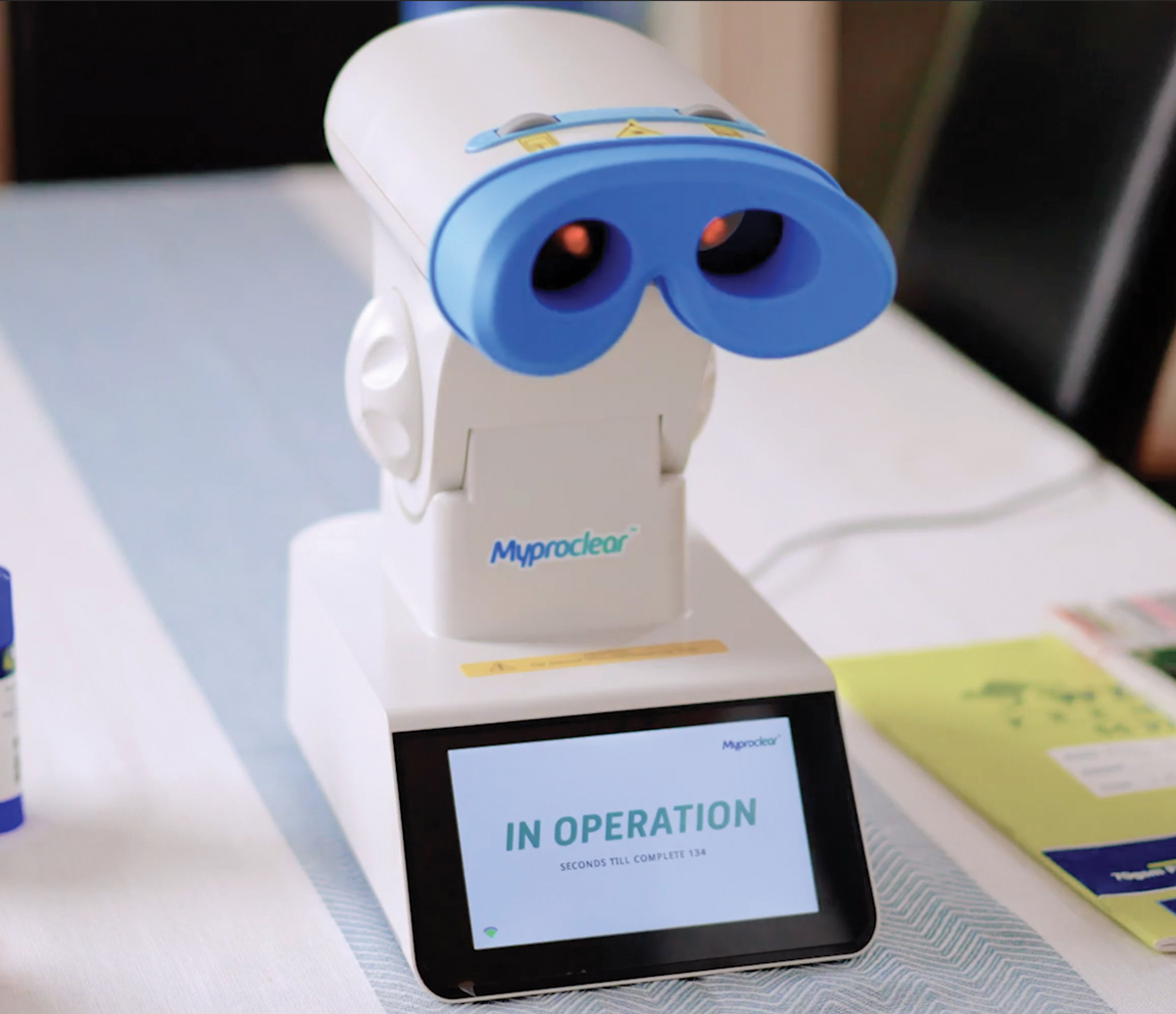 |
| The emmetropization mechanism could be using the long-wavelength image contrast from red-light therapy as a cue that the eye is too long and to generate ‘stop’ signals to slow eye growth. Photo: Eyerising International. Click image to enlarge. |
Myopia management is growing worldwide to reflect the increased prevalence of the condition. With development of new therapies being a top concern, many options are being explored. One of those is repeated low-level red-light therapy (RLRL), which is the topic of one new study, reviewing the current literature on this method’s efficacy.
Of note, all the currently published trials using RLRL were in children of Chinese descent. In these trials, kids were assigned to receive red light on a table-top device with oculars, with each eye separately looking at an internal diode emitting long wavelengths of red light; patients had to complete three-minute sessions twice a day for five to seven days a week, with treatment separated by at least four hours in between. Most studies did include control groups of kids wearing single-vision lenses.
Results from these trials displayed that RLRL significantly slowed myopic spherical equivalent refraction progression and axial length. Specifically, the largest study including an experimental group of 117 kids showed 69.4% less axial length growth than the control group and 76.6% less myopic spherical equivalent refraction progression after 12 months. The study authors mention that if future research show comparable numbers, this would be greater than the effects of atropine, DIMS lenses or multifocal soft contact lenses used for myopia control.
In each study, a percentage of the population displayed reduced axial length with rates ranging from 21% to 63% and many studies observed an average hyperopic shift in the RLRL cohorts. Other than 1% atropine, this is the only other therapy for myopia management that has induced a meaningful initial decrease in axial length.
Another study looked at the effects of sham treatment using 10% power of the low-level red light, and they found that 5% of the sham cohort had axial length shortening, meaning 10% intensity of light may still produce a control effect. However, 1% power did not show any corresponding effects.
Choroidal thickness changes occurred in some studies as well, with thickening of the subfoveal choroid corresponding with many studies’ RLRL cohorts. One report did find that thickening returned to baseline at three months after treatment. As such, transient thickening along with observed axial length shortening may be indicative of inflammation or phototoxic damage, but this is still unknown.
Despite RLRL’s seemingly positive results, it should be noted that rebound effects were seen in two of the studies, observing axial length increases. The authors do take into account that atropine and orthokeratology also have reported rebound effects, but not to the magnitude as seen with these RLRL studies.
These studies provide a great framework for the efficacy of RLRL therapy when used for myopia management, but there is still a lot yet needed for better understanding. In their article for Optometry & Vision Science, the researchers stress that “precise characterization of treatment and parameters such as wavelengths, dose and duration of treatment remain inconsistent and not replicable.”
Looking ahead to future clinical application of the therapy—available internationally but not yet in the United States—the researchers speculate that children may need as little time as it takes to brush their teeth twice a day to minimize myopia progression with RLRL. However, there are no long-term safety profiles of RLRL therapy in children or documentation of its lasting effects into adulthood. Myopia can progress over the course of a decade and well into adulthood, and myopia control treatments may need to correspond with these progression timelines.
“RLRL therapy needs to be investigated further before it is used in clinical practice, to evaluate the risk of using this type of therapy and to further explore any potential benefit,” adds Erin Jenewein, OD, an associate professor at Pennsylvania College of Optometry and one of the study’s authors.
Salzano AD, Khanal S, Cheung NL, et al. Repeated low-level red-light therapy: the next wave in myopia management? Optom Vis Sci. October 25, 2023. [Epub ahead of print]. |

